Popular Articles
- Stop Bursitis with Turmeric
- Acusil Supplement Facts
- Natural Treatments for Bursitis
- Medications That May Interact with Acusil
- 8 Ways to Stop Recurring Bursitis
- 6 Simple Cures for Shoulder Pain
- Home Remedies for Hip Joint Pain
- Reduce Your Risk for Sports-Related Bursitis
- Capisette Supplement Facts
- 10 Remedies for Water Retention
 A Dietary Guide for Bursitis SufferersIn This Article
If you are suffering from Bursitis, avoid THESE three foods to help reduce inflammation.
Living with the pain of bursitis can significantly limit the ability to participate in physical activities and often leads to a reduction in quality of life. While there are treatment options that involve drugs or surgery, some people can control their bursitis through a simple, natural change in diet. What is Bursitis, Really?Bursitis is a somewhat odd ailment that has its root in several different causes. The bursa is a sac filled with fluid that helps prevent joints from rubbing against each other. The bursa sac is basically a cushion for the joints. However, although bursitis is related to arthritis, it is considered a separate issue. When someone gets bursitis, the sac fills with extra fluid, leading to pain, swelling, tenderness, and inflammation. Typical causes of bursitis include repetitive motion and stress on the joints. Injuries, overuse, inflammation in the body, and extended pressure on the joint can also contribute to bursitis. Bursitis is typically considered a mild ailment, but there are ways to prevent the issue from occurring. Chronic bursitis can be nearly as debilitating as severe arthritis. Common Occupations Leading to Bursitis
Bursitis StatisticsApproximately one in every 32 people have bursitis of some kind, which equals about 3.2 percent in the United States. It is estimated by Right Diagnosis.com, that there are about 87 million people in the United States who suffer from bursitis of some kind. These issues include common joint and inflammation issues including:
Bursitis CausesGenerally, bursitis is caused by environmental factors and stress on the joints. However, if your body is already conditioned for inflammation, you may see the effects of bursitis sooner. Anyone can get bursitis after engaging in repetitive motions, but if you reduce inflammation in your body overall, you will be able to reduce your chances of feeling pain from bursitis. You may be able to remove your pain level completely, or at least reduce it enough to continue to engage in regular, everyday activities. Treatment Options for BursitisWhen bursitis is caused by repetitive motion that places stress on a joint and inflames the Ice and anti-inflammatory medications that can be purchased over-the-counter may be used for mild cases of bursitis. More serious cases of the condition can be treated by prescription medication or injections of steroids, but the side effects of steroid injections can cause undesirable complications for sufferers. Physical therapy is a method of treating bursitis without using medication. It can also be used in conjunction with medication for more serious cases of bursitis, and some cases that do not respond to any form of traditional treatment will require surgery. Foods that Fight BursitisDid you know that the foods that you eat can reduce the amount of inflammation that you see in your body? Basically, if you eat foods that have an inflaming or stressing effect on the body, any extra stress on the body will lead to pain and swelling. Think of it as an allergy. If you are allergic to shellfish, then the more shellfish you eat the worse your allergy symptoms will become. The same effect is true with inflaming foods. The more inflaming foods you eat, the higher your chances of experiencing inflammation-related pain in your body- such as bursitis or arthritis. Luckily, there are plenty of things you can eat that will reduce the inflaming effect of foods on your body. There are also several highly inflaming foods that you should avoid, including vegetable oils and unsaturated fats, processed foods, and High-glycemic foods like empty carbohydrates (white bread, for example) and simple sugars. So, what should you eat instead? Add these inflammation-reducing foods to your diet to ensure you avoid painful bursitis symptoms: PineapplePineapple contains the powerful enzyme bromelain, which is an inflammation-fighting ingredient. According to the University of Maryland Medical Center, one study showed that a combination of bromelain, trypsin, and rutoside (two other inflammation-reducing enzymes) was as effective as NSAID medication treating knee pain. Pineapple also helps make protein digestion easier. PapayaPapaya contains a beneficial enzyme known as papain. Papain is a highly effective anti-inflammatory agent that was proven in a 2001 study conducted by the Second Tashkent State Medical Institute to provide as strong of an anti-inflammatory effect as butadiene and indomethacin. Dark GreensDark greens contain many, many beneficial ingredients ranging from vitamin K to iron. Dark greens also contain B vitamins, which can have an anti-inflammatory effect on the body. B vitamins repair cells and prevent damage to cells, according to the Human Performance Resource Center. Some of the best dark greens to add to your diet include broccoli, spinach, kale, and dark lettuce. BananasThere is some debate on whether bananas are good for fighting inflammation or not. Some medical research shows they cause inflammation because they are a high-glycemic food, while other research shows they fight inflammation because they contain vitamin C, antioxidants, and Alpha-linolenic acid (which is known for fighting inflammation). Fish, Eggs, and Grass-Fed MeatsOmega-3 oil is one of the biggest sources of nutrients that most Americans are missing today. In fact, it is estimated by the Cleveland Clinic's Wellness Institute that Americans eat about 25 times more omega-6 fatty acid than Omega-3 fatty acid. The recommended balance of Omega-3 oils to Omega-6s oils is 4 to 1. Basically, to reduce the inflammatory effects of omega-6 acids, there have to be enough other oils in the body from omega-3s, 7s, and 9s. Omega-3 fatty acids largely come from fish, but other sources include walnuts, grass-fed meats, flaxseed, and pasture-raised eggs. You can find omega 7 and 9 in olive oil and macadamia nut oil. Take care with olive oil, however, as it is often adulterated with omega-6 oils like soybean oil. If your olive oil doesn’t have a strong flavor and does not solidify when you refrigerated it, it is not pure olive oil. Low-glycemic GrainsMost grains have a high glycemic index, which can lead to inflammation in the body. However, some grains have a low-glycemic index and will not cause a huge sugar spike in the body. These grains include barley, oatmeal, quinoa, and bulgur. Whey ProteinWhey protein is the protein left in the milk after the solids and fat are removed. You might consider whey as true ‘skim milk.’ Whey protein has been newly identified as inflammation-fighting food. In a 2001 study published in the Cancer Epidemiological Biomarkers Preview, researchers found that giving whey protein to rats with colon cancer reduced inflammation and lowered their incidence of colon cancer by about 20 percent. MagnesiumMagnesium is another important nutrient that many Americans are lacking. Magnesium has many benefits, including brain-boosting powers. Magnesium can also fight inflammation in some cases. A 2007 study published in the American Society for Clinical Nutrition showed that women who ate magnesium-rich foods showed a reduction of systemic inflammation and endothelial dysfunction in healthy women over the age of 43. However, some research suggests that magnesium is best absorbed through the skin. In a study of magnesium supplement absorption from Baylor University Medical Center, it was found that only 7 percent was absorbed. In a study of magnesium absorption through the skin from the University of Birmingham, it was found that soaking in a magnesium bath of 1 percent showed elevated magnesium levels in the blood and urine. Magnesium-rich foods include dark leafy greens, bananas, beans, lentils, and oats. Avoid These FoodsWanting to avoid harsh medical treatments that could be prescribed for bursitis is an understandable goal, and choosing to alter one's diet is a method of controlling bursitis that has been proven to be effective. Familiarize yourself with the types of foods that should be avoided to give yourself the best chance of controlling bursitis through a change in diet.
LegumesThe specific type of protein that makes up legumes should be avoided by anyone dealing with inflammation in the joints because it cannot be properly digested by the human body. When this protein is inadequately broken down by the digestive enzymes in the body, an inflammatory response results. Unlike some other types of foods, cooking legumes will not make them any easier to digest. Avoid beans, peanuts, soybeans, hummus, and other legumes to reduce inflammation. Simple Carbohydrates
Whole grains and high-fiber carbohydrates can be part of a healthy diet for people who suffer from bursitis, but take care when choosing bread or starchy vegetables. Refined starches that have been processed in a way that strips them of their nutritional value are common in the store because they have a longer shelf life and are more popular among consumers. However, these high-glycemic foods cause a spike in blood sugar that can even cause inflammation and lead to bursitis. Not only do refined carbohydrates contribute to inflammation, but the failure of refined carbohydrates to keep a person feeling full after they eat often leads to overeating and obesity. Carrying around extra weight means that stress is put on the joints, and people who are overweight are at risk of developing bursitis.
|
| Supplements for Bursitis |
|
|
Stopping Bursitis Before It Starts
Like many troubles that Americans face these days, much of the health problem of bursitis is caused by excessive inflammation in the body. Cut down on inflammation and you will see fewer bursitis flare-ups. You can also help prevent bursitis flare-ups by taking care of your joints. If you start to feel pain during an activity, stop for a while, if possible. At work, where it is often hard to move around or change activities, try changing how you sit, take frequent movement breaks, or try to do your jobs in a way that doesn’t place stress on the same joints over and over. This will help you keep your bursa sac functioning appropriately, and it will help you manage your risk of bursitis and prevent flare-ups before they begin.
Sources
http://www.drweil.com/drw/u/ART00325/Bursitis.html
https://www.healthtap.com/#topics/foods-to-avoid-for-bursitis-tendonitis
http://www.mayoclinic.com/health/bursitis/DS00032





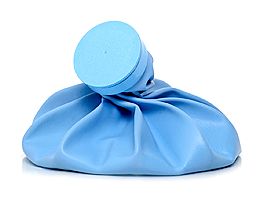 bursa sac, rest is often recommended. However, people who suffer from bursitis because of age or an action that must be performed regularly for work are often unable to find relief through rest.
bursa sac, rest is often recommended. However, people who suffer from bursitis because of age or an action that must be performed regularly for work are often unable to find relief through rest.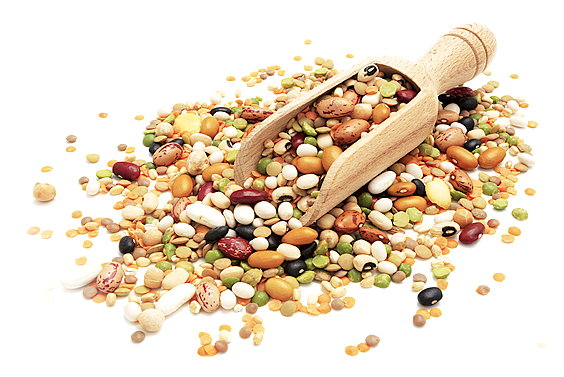
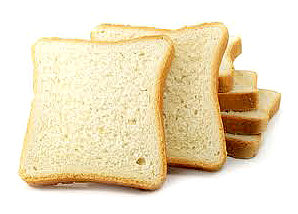
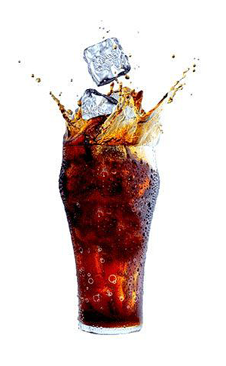 Added Sugars
Added Sugars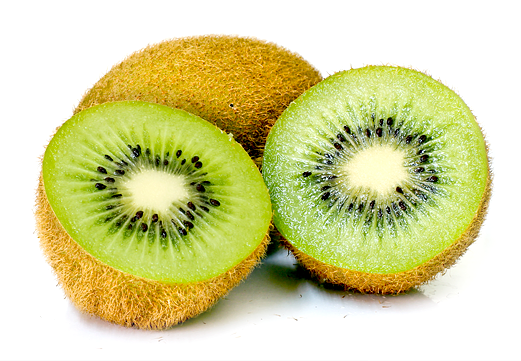 Vitamin C
Vitamin C Omega-3 fatty acids can be found in fish, healthy oils, some types of nuts, and certain types of eggs. These fatty acids are thought to be necessary for maintaining a healthy metabolism, and the health benefits that can be enjoyed through the consumption of foods containing omega-3 fatty acids help with inflammation issues.
Omega-3 fatty acids can be found in fish, healthy oils, some types of nuts, and certain types of eggs. These fatty acids are thought to be necessary for maintaining a healthy metabolism, and the health benefits that can be enjoyed through the consumption of foods containing omega-3 fatty acids help with inflammation issues.